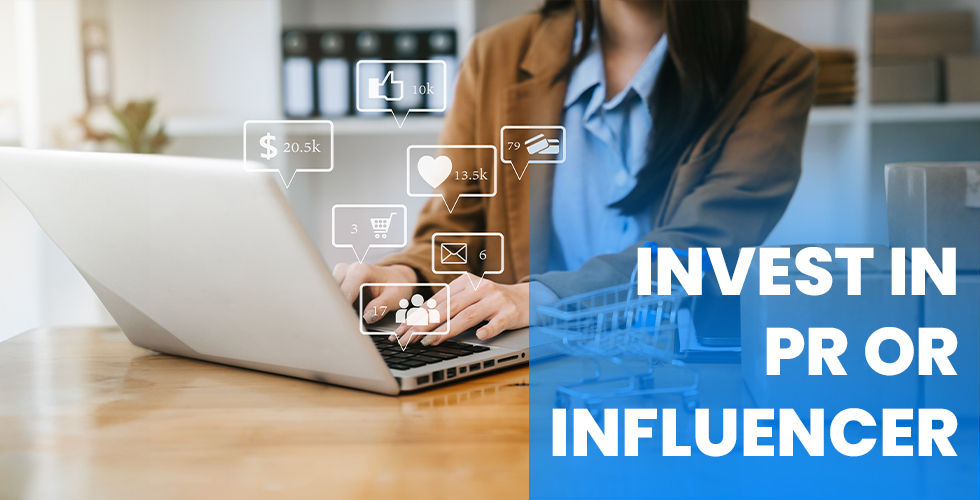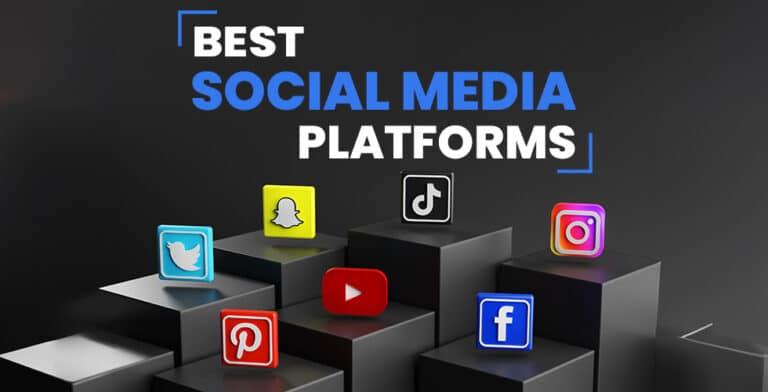E-commerce businesses today have so many options when it comes to marketing – it can get overwhelming! Two of the most talked about are public relations (PR) and influencer marketing. At first glance, they may seem quite similar – both leverage third parties to increase brand awareness and drive sales. However, when examining them more closely, distinct differences emerge.
Understanding these key differences is crucial for e-commerce brands looking to allocate their marketing budgets effectively. Used together strategically, PR and influencer marketing can offer complementary benefits. This article will examine what exactly PR and influencer marketing involves, their respective pros and cons, and when each may be better suited for e-commerce brands.
With the right context, e-commerce marketers can determine how to best incorporate PR and influencer marketing into their broader digital strategies. A tailored, integrated approach combining the unique advantages of both can help emerging e-commerce brands stand out in a crowded online marketplace. Let’s explore how.
PR for E-commerce
Public relations (PR) involves earning media coverage and publicity for a brand rather than paying for advertising. PR professionals aim to build relationships with journalists and media outlets to secure positive press mentions.
There are several benefits that you can achieve by promoting your e-commerce business by PR, including –
- Reach a broad audience through earned media rather than paid advertising.
- Build credibility and trust by getting positive press mentions in leading publications and websites.
- Ideal for announcing major news like new product launches, rebrands, and expansions.
- Often more cost-effective than paid advertising and can reach wider audiences.
- Challenging to control messaging and timing compared to owned channels.
- Opportunity to tell brand stories and connect emotionally with audiences.
- Media mentions bring third-party credibility and validation.
- Print/online articles, TV segments, and radio interviews exposed brands to new audiences.
- Can establish thought leadership by contributing quotes or insights to stories.
The key benefit of PR for e-commerce brands is the ability to earn visibility and credibility through leading media outlets and build brand awareness beyond just current customers. However, PR comes with less control compared to owned marketing channels.
Influencer Marketing for E-commerce
Influencer marketing involves partnering with social media influencers to promote your products and services to their engaged follower base. Influencers are third-party individuals who have built credibility and a loyal audience around a specific niche or industry.
Promoting your eCommerce business via influencer marketing offers some unique advantages, for example –
- Leverage influencers who have engaged niche audiences that closely align with your target market.
- Influencers promote products through sponsored posts, content creation, and recommendations.
- More control over messaging, timing, and creative content compared to PR.
- Requires paying influencers through free products, commissions, or set media fees.
- Risk of bad partnerships if influencer values don’t align with the brand.
- Lack of disclosure around sponsored posts can hurt brand credibility.
- Hyper-targeted promotion to micro-influencers with highly engaged followers.
- Influencers seen as authentic tastemakers, lend credibility through recommendations.
- Content creation and storytelling around products entertain and engage followers.
- Stronger emotional connection and trust between influencers and their audience.
The advantage of influencer marketing is tapping into influencers’ strong engagement and credibility with specific niche audiences relevant to the brand. However, the cost and lack of full control are potential downsides for e-commerce brands to consider.
Key Differences Between PR And Influencer Marketing For E-commerce
When it comes to choosing between PR and influencer marketing, e-commerce brands should understand that each strategy offers distinct benefits and tradeoffs.
Reach
A major difference is the reach each can provide. PR offers the ability to get your brand and products featured in leading publications and websites. This broad, mass reach exposes you to large audiences and new potential customers across various demographics and interests.
In contrast, influencer marketing provides hyper-targeted reach by partnering with niche micro-influencers deeply embedded in specific communities. Their engaged follower bases represent defined target audiences relevant to your brand.
Cost
In terms of cost, PR wins out as the more budget-friendly option. Beyond staff time, you mainly invest in developing relationships with journalists and media outlets. Earning media coverage avoids paid advertising costs.
Influencer marketing requires paying influencers for their promotions through free products, commissions, or negotiated media fees. Larger influencers often have high costs attached to sponsored content.
Control
When using PR, you have little control over the messaging and media outlets once you pitch stories. The content ultimately depends on what reporters and editors publish.
With influencers, you decide exactly how your brand and products are positioned through close partnerships. You can shape the narrative in sponsored posts and the creative direction of related content.
Audience Connection
While PR expands your reach, influencers often have stronger emotional connections and engagement with their core followers. Their recommendations come across as more authentic and trusted. This audience intimacy can be very persuasive.
Which is Better for E-commerce?
When it comes to PR versus influencer marketing, there isn’t necessarily one single best option for e-commerce brands. The ideal approach is to leverage both strategically to maximize exposure and sales.
PR is better for:
- Establishing credibility – Getting earned media placements in leading publications lends legitimacy and authority to newer e-commerce brands.
- Broad brand awareness – PR allows you to get your brand name and products in front of a diverse, mass audience beyond existing customers.
- Major announcements – PR is ideal for promoting launches, rebrands, new products, or other major news.
Influencer marketing is better for:
- Driving traffic and sales – Influencers create content and make recommendations optimized to convert their engaged followers into customers.
- Targeting specific niches – Micro-influencers can promote products authentically to their particular communities.
- Ongoing content creation – Influencers continuously produce new social content integrating your products.
The combination of PR and influencer marketing provides the right balance for e-commerce brands. PR establishes credibility and awareness while influencers directly interact with target consumers to generate action. Using both strategically maximizes the unique value of each.
Wrapping Up
While PR and influencer marketing may seem interchangeable at first glance, they each offer distinct benefits. PR earns media visibility through top-tier outlets, enabling brands to organically build awareness and trust. Meanwhile, influencer partnerships provide intimate access to engaged, relevant niche audiences.
For the greatest success, e-commerce marketers should develop an integrated approach using PR and influencer marketing together. PR can establish credibility and expand reach, then influencers activate communities to drive conversions.
Rather than treating them as disparate options, a multi-channel strategy combining PR and influencer marketing maximizes their complementary strengths. Together, they offer an effective one-two punch to cut through the noise and achieve ecommerce KPIs. With the right balance, brands can elevate their profile while also directly connecting with target consumers.




